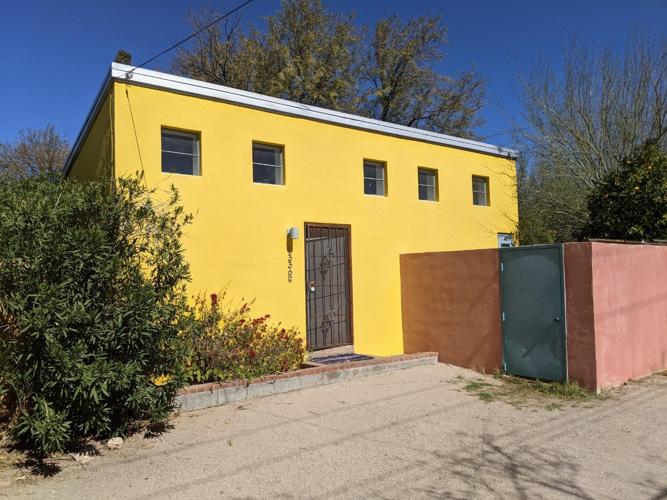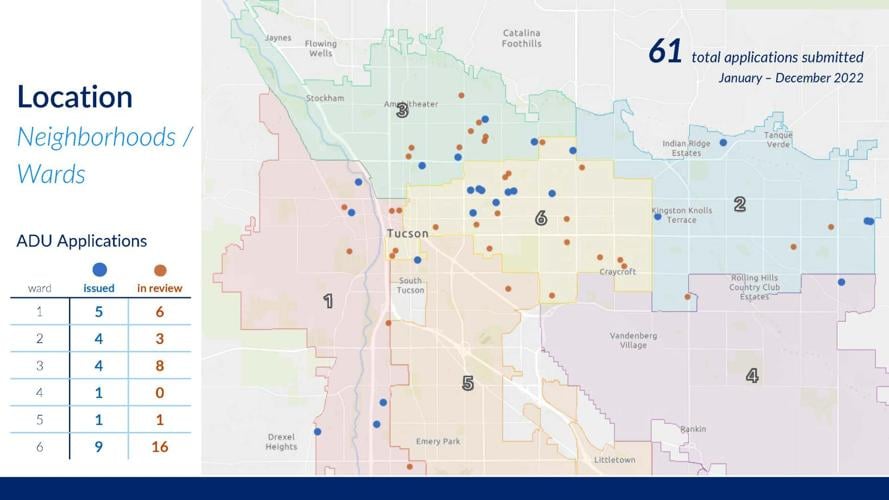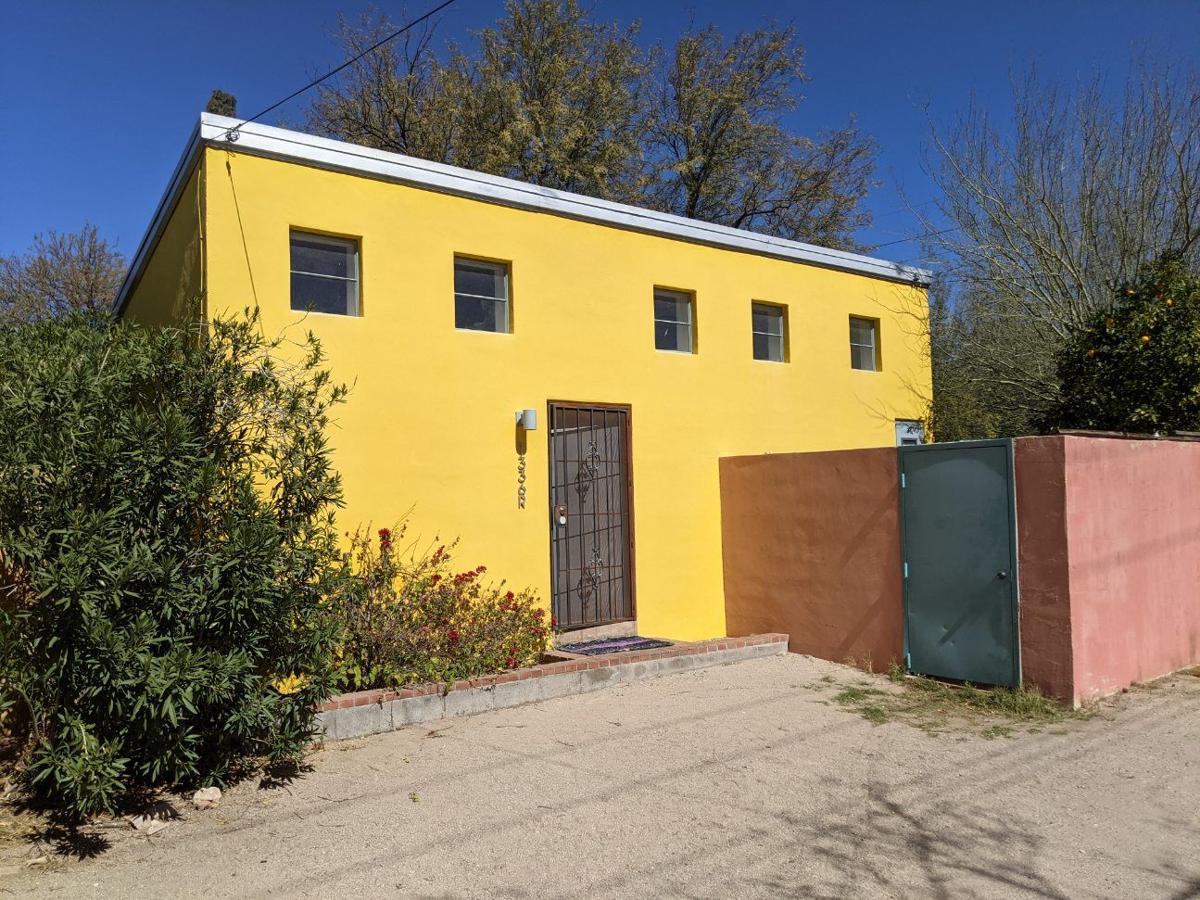More than a year after Tucson’s City Council approved the use of casitas as secondary, smaller housing units in residential areas, city staff are trying to find ways to make building the accessory units easier and less costly.
Tucson’s mayor and council approved amending the city’s zoning code in December 2021 to allow ADUs, or accessory dwelling units, as add-ons to main residences with their own kitchens and restrooms. The move was outlined in the city’s housing affordability plan and sold as a way to supply more affordable housing to the region. However, the costs necessary to build an ADU can be a significant barrier to owning one.
Staff told City Council at its March 7 meeting that most of the concerns received on the ADU ordinance have been about affordability, including the cost of impact fees that can add thousands to the total for a casita project. The fees are charged on new developments to fund the infrastructure and services needed to serve new residential growth.
To address the concerns, City Council unanimously passed a motion for staff to come back “as quickly as possible with a plan to remove barriers and obstacles, including reducing impact fee for ADUs.”
The city’s Planning and Development Services Department, or PDSD, will also move forward with a set of changes to make ADUs more accessible by providing financial assistance programs, developing pre-approved models of casita structures and creating an inventory of resources.
Financial constraints
Sixty-one applications to build casitas were submitted to the PDSD last year. None has been constructed, but 24 applications have been approved.
Koren Manning, a planning administrator for the city, said the numbers show “there’s a lot of interest in ADUs in Tucson already,” and that “the design-build process takes quite a while, especially for homeowners who this is sometimes often the first structure they have designed, permitted and had built on their property.”
The top use cited by those who’ve applied for a permit or are thinking about building an ADU was for multi-generational housing, according to the results of a city survey. While most respondents said they “strongly agree” ADUs benefit Tucson, the most common concern cited about their use was affordability.

Of the 61 ADU applications submitted in 2022, most are in Ward 6, likely due to the larger backyards throughout several historic neighborhoods in the region, according to the city.
The cost of impact fees for ADUs varies by size and type of construction. For units 750 square feet or less, the fee is about $2,750, while units above that size are charged $4,310, according to the PDSD. The total size of a casita is capped at 1,000 square feet.
Although the fees can seem inconsequential to the total cost of building a casita, all the costs add up for the units Tucson is trying to provide as affordable housing options.
Some of those constructing ADU projects have switched to creating sleeping quarters instead. These development types are fundamentally the same as casitas but don’t have kitchens and don’t require impact fees.
City Attorney Mike Rankin said the city could look into changing the definition of ADUs in the zoning code, so the addition of a kitchen doesn’t trigger impact fees, but Tucson will have to work out how to “substitute those funds from another source back into the impact fee account.”
State statute holds that if a municipality waives impact fees for development, it must reimburse the amount waived. The city uses general fund dollars and its Highway User Revenue Fund to pay for the impact fees it cancels, but that means instead of developers paying the fee, city taxpayer dollars will.
Discussion at the March 7 meeting also considered utilizing the city’s lower rates for mixed uses and a provision in the city’s code that allows for impact fee waivers for affordable housing. City Manager Michael Ortega told the council staff will move “sooner rather than later” with possible options councilmembers can adopt.
The use of model plans for casitas could also accelerate the building process. The PDSD plans to create an ADU “model plan library” containing designs already approved by the city to work as basic templates for various lot sizes while meeting standard zoning codes.
The department is seeking grant funding through AARP’s Community Challenge grant to sponsor an ADU design competition where staff would review plan submissions for building code compliance and make them available to the public at lower costs and quicker review times. The local architects and designers whose plans the city selects would be awarded prize money.
For the last seven months, local architect Valerie Lane has focused on creating model ADU units. The draft plans have already been approved by Pima County, Lane said, and she recently submitted them to the city for approval.
“The most significant savings is time. If you go out and hire an architect today, it could be about six months before you really are able to start construction,” she said. “What we did is create a pathway where instead of starting construction in six months, we hope that you can start construction in one month, so we can save people some time.”
Tucson also plans to create an ADU resource directory to connect homeowners to organizations and people like Lane who support casita development. But even with the help, building an ADU requires significant capital.
City-specific data on ADU costs is limited, but rising interest rates and cost of goods are compounding overall construction costs. Only 10 people who responded to the city’s ADU survey reported their costs, and the majority reported their estimated costs ranging from $140,000 to $200,000.
While minimizing impact fees could take some money off the total, Tucson is planning to create “ADU Rehabilitation Funding” through the Housing and Community Development Department to provide financial assistance to low-income homeowners to improve an existing ADU or working on an accessory structure that can be turned into one.
Households that meet low- to moderate-income criteria could qualify for up to $20,000 to use for an ADU. The housing department has $200,000 in grant funding to spend on the program and plans to start accepting applications in April.
Some zoning concerns
The zoning conditions for casitas were a point of contention between city councilmembers that halted administration of the ADU ordinance in the last months of 2021 and changed zoning conditions for the structures. ADUs can be 10% of the lot size they’re built on at a maximum of 1,000 square feet, and the unit’s heights are capped at 12 feet.
The most common height for the 61 ADU requests submitted to the PDSD is 12 feet, and the most common area is 10% of the lot size, which maxes out the allowed conditions. The department reported that “several stakeholders expressed interest in relaxed zoning regulations.”
“Every single property in Tucson, by definition, is unique, so to put a blanket size restriction on something like this is highly restrictive,” Lane said. “We can still adhere to setbacks and building heights, the code already dictates that, so to put square footage limitations based on property size feels arbitrary.”
The ADU ordinance sunsets in 2026 to allow the mayor and council to reevaluate the zoning regulations, but the council will likely have that conversation sooner.
“I don’t want to have to absolutely wait the five years until we talk about this again to review the possibility of having bigger units,” Mayor Regina Romero said during the City Council’s ADU discussion. She later added that smaller lot sizes often correlate with lower-income neighborhoods and “depending on the lot size really continues to help the systemic concern in terms of creating intergenerational wealth with the homes, and the value of the homes, in the different neighborhoods in our community.”
Manning, from the PDSD, said “it is still a little early” to reconsider the zoning conditions without enough data or construction to base decisions on. For now, the focus is on providing tools to make ADUs more affordable.
“I think (the ADU initiatives) will do a lot to make the program more usable for people. I think we’d like to reevaluate in a year or two after we have taken some of those steps,” she said. “There’s still more work to be done to make these easier for people to finance. But in general, it’s something that is within a lot of homeowners’ control to build, and that’s not the case for most affordable housing.”
For more information on ADUs, visit: tucsonaz.gov/pdsd/accessory-dwelling-units-code-amendment
Watch now: Tucson City Council discusses ways to make casitas more affordable during a one-year review of the secondary homes' implementation. Video courtesy of city of Tucson.







